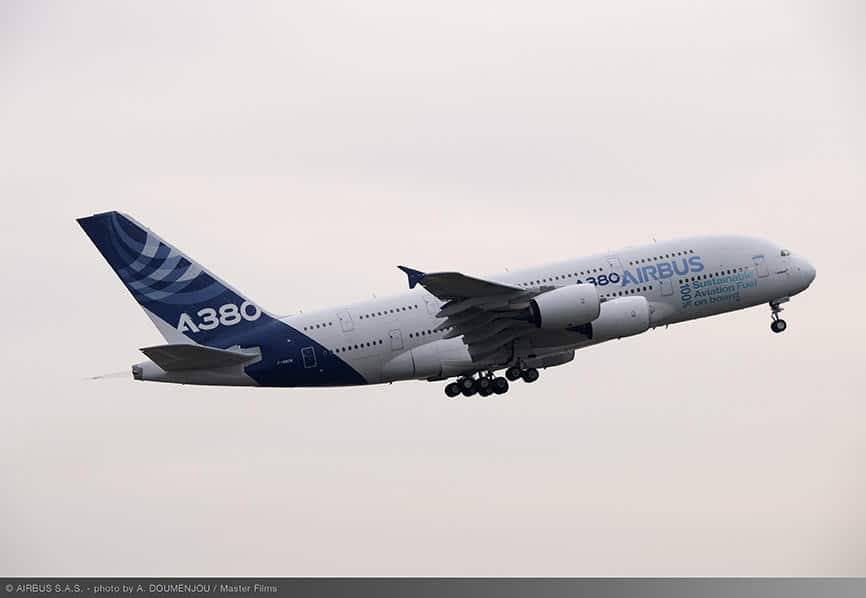Aviation
Why are some airlines still prefer the Airbus A380?
The demand for the #A380 is increasing as the number of visitors rises, and it is the only aircraft that has the capabilities to fulfill it.

According to OAG report, It seemed appropriate to dwell on the comeback of the massive aircraft during the week when the final A380 was delivered to Emirates because, less than two years ago, most airlines seemed to be relegating it to the scrap heap. However, suddenly, business leaders are discussing the necessity for a very large aircraft type like the A380 once more, and for a variety of reasons, airlines are putting them back in the air. What has occurred, then?
The Boeing 747 has been retired from the airlines due to a lack of spare parts and high maintenance costs, but there are no other aircraft, such as the A380, that can perfectly replace the Jumbo Aircraft segments. Due to airport congestion caused by handling narrow body planes, a single huge plane may transport people at a time, increasing the airline’s and airport’s reliability. The same issue was currently plaguing England’s Heathrow airport. Airlines now have greater chances to transport passengers related to the proper size of planes.
Promote Market Recovery
Everyone has been surprised by the strength of the post-pandemic recovery, as evidenced by the difficulty in finding enough resources to run a full summer schedule in recent weeks. Due to this demand, some airlines have reassessed the importance of having large aircraft in their fleets, particularly when operating to airports with limited slot availability where obtaining extra frequencies and resources would be challenging. In many situations, the A380 covers that demand gap, and it’s obvious that airlines are being extremely picky about where they use the aircraft this summer.
Issues with Aircraft Delivery
The B777X, which was formerly slated to enter service by 2020 but is now not anticipated to be operational until at least 2025, was chosen by many airlines as the ideal replacement for the A380. Even the most patient airlines are annoyed by the delay and have had to find alternatives; for some airlines, the A380 is that option. It is not uncommon for new aircraft to be late to market.
The A380’s Potential
Last week’s final aircraft’s departure from the delivery site effectively put an end to any further development, but it is also evident that the current aircraft and many of its operators have found new purpose. Although we wouldn’t have said the same about many other operators two years ago, times have changed, and the A380’s future has also changed. For Emirates, the A380 will undoubtedly remain a staple of their fleet for many years.

Airlines
Air India to Launch aircraft maintenance training institute in Bengaluru

Air India, one of India’s leading global airlines, is set to establish a Basic Maintenance Training Organization (BMTO) in Bengaluru.
This institute will offer a comprehensive Aircraft Maintenance Engineering (AME) program certified by the Directorate General of Civil Aviation (DGCA). The program will follow an integrated 2+2 year structure, combining classroom learning with practical, hands-on training.
This initiative is part of Air India’s broader goal of creating a robust aviation ecosystem in India. With plans to expand its fleet and strengthen its operations, the airline aims to build a skilled workforce of maintenance engineers, making the organization self-reliant while supporting its ambitious transformation journey.
This country tops visa rejections in the popular Schengen countries
To bring this vision to life, air india has partnered with Bengaluru Airport City Limited (BACL), a subsidiary of Bangalore International Airport Limited (BIAL). Together, they will develop a state-of-the-art facility spanning 86,000 square feet at Bengaluru Airport City.
This purpose-built campus will feature modern classrooms, well-equipped laboratories, and qualified trainers to deliver world-class education and training. The institute is expected to become operational by mid-2026.
The BMTO will be located close to Air India’s new 12-bay Maintenance, Repair, and Overhaul (MRO) facility, also set to open in Bengaluru by early 2026. The AME program will begin with two years of academic coursework, followed by two years of practical training at the MRO, ensuring students receive hands-on experience adhering to industry standards.
Sanctions & Engine Issues Ground Half of Russia’s A320neo fleet
In the meantime, Air India has introduced a Cadet AME program in collaboration with reputable institutions in Bengaluru and Hyderabad.
This ensures continuity in its commitment to developing skilled aircraft maintenance engineers while the BMTO facility is under construction. The program also allows students to pursue a bachelor’s degree through university partnerships, enhancing their career and academic opportunities.
With this initiative, air india plane aims to address the growing demand for skilled professionals in aircraft maintenance and engineering, air india new planes contributing to the development of India’s aviation sector and creating specialized career paths for aspiring engineers.
-

 Aviation2 months ago
Aviation2 months agoMicrosoft Flight Simulator Raises $3 Million to Bring Back the An-225 Mriya
-

 Airlines2 months ago
Airlines2 months agoQatar Citizens Can Travel to the United States Without a Visa
-

 Aviation2 months ago
Aviation2 months agoQatar Airways bans these new Electronic Devices on plane
-

 Airlines2 months ago
Airlines2 months agoJapan Airlines Rolls Out Free Domestic Flights to International Passengers
-

 Defence2 months ago
Defence2 months agoWhich Country Has the Largest Fleet of Fighter Aircraft?
-

 Airport2 months ago
Airport2 months agoWestern Sydney Airport Welcomes Its First Plane After 6 Years of construction
-

 Travel2 months ago
Travel2 months agoQatar Airways Launches Four Additional Flights from Amsterdam
-

 Aviation2 months ago
Aviation2 months agoDid you know ? Once Boeing 747 carried 1088 passenger in 1991








